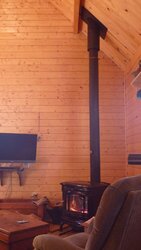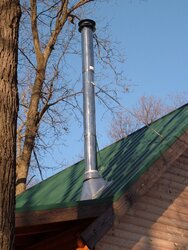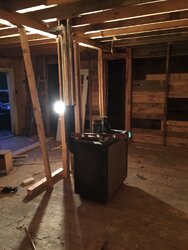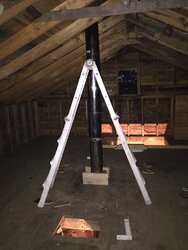Hi all,
I've done a bit of searching, but mainly what I see is the different brands and such of stoves, types of combustible used for fire etc.
I'm looking more for some help as to building/putting together a nice stove setup albeit likely used for our hunting shack up north. We've decided to convert an old grainery on our families old farmstead and have started the process of redoing it just enough to make it habitable for weekends to go up and hunt, BS, play cards and have a few cold ones.
We've narrowed it down to a wood stove as we have an abundance of wood that we can use. I'd say the bottom floor is about 750sq ft and the building is two floors, and the sleeping quarters will likely be upstairs.
What things do I need to know to start looking for the pieces? I've done some research, but don't know for example I need double or triple wall to go through the second floor and roof to the outside, or does it make it better/more efficient to go outside right away and then run the height of the building outside?
Trying to find things like that out and get the best setup for a Northern MN hunting shack that will likely at times see weather below the freezing mark. This forum seemed to be the closest I could find that would seem to have the answers.
Thanks in advance
I've done a bit of searching, but mainly what I see is the different brands and such of stoves, types of combustible used for fire etc.
I'm looking more for some help as to building/putting together a nice stove setup albeit likely used for our hunting shack up north. We've decided to convert an old grainery on our families old farmstead and have started the process of redoing it just enough to make it habitable for weekends to go up and hunt, BS, play cards and have a few cold ones.
We've narrowed it down to a wood stove as we have an abundance of wood that we can use. I'd say the bottom floor is about 750sq ft and the building is two floors, and the sleeping quarters will likely be upstairs.
What things do I need to know to start looking for the pieces? I've done some research, but don't know for example I need double or triple wall to go through the second floor and roof to the outside, or does it make it better/more efficient to go outside right away and then run the height of the building outside?
Trying to find things like that out and get the best setup for a Northern MN hunting shack that will likely at times see weather below the freezing mark. This forum seemed to be the closest I could find that would seem to have the answers.
Thanks in advance





